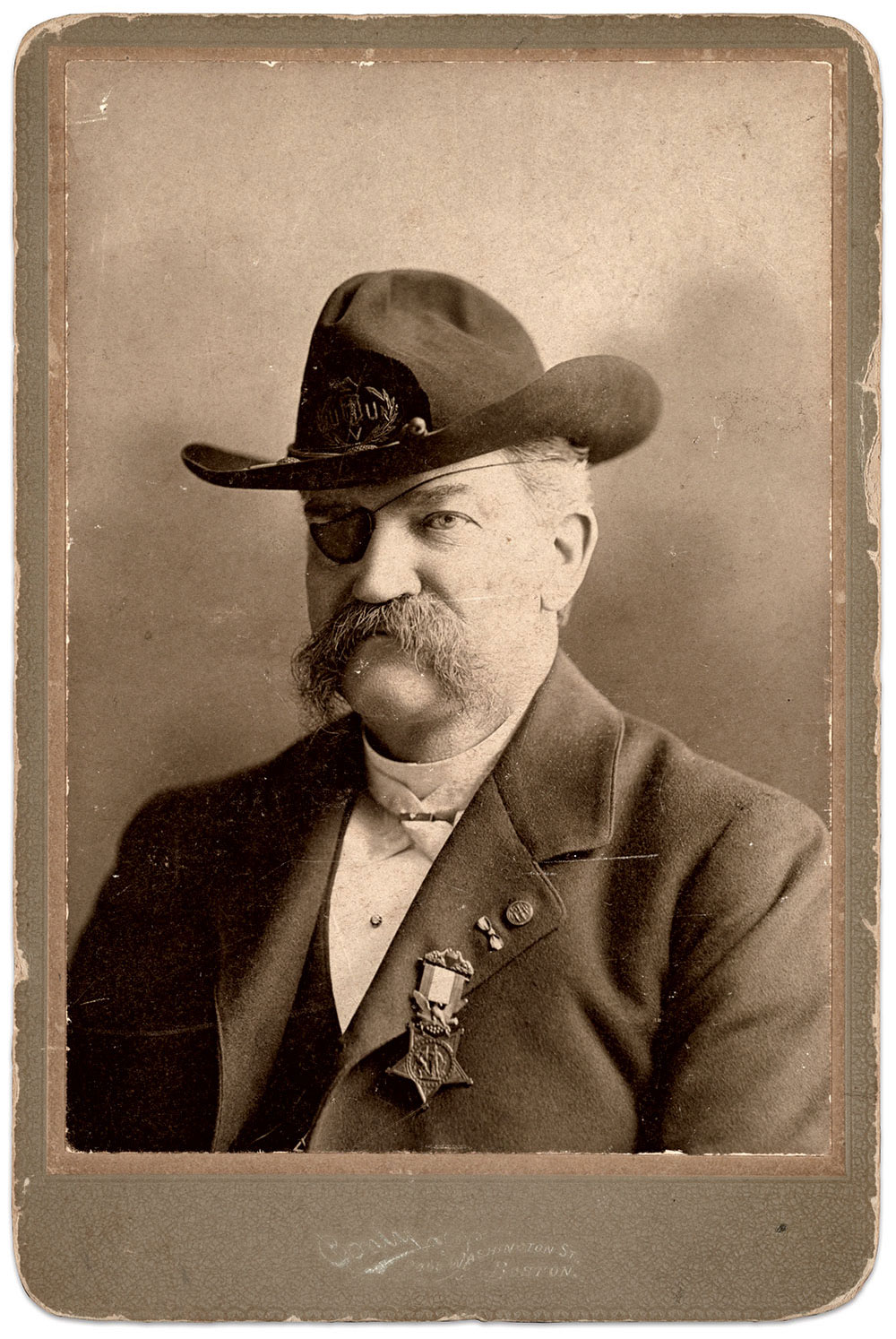
Keepsake mementos and other trinkets dangled from the ends of pocket watch chains worn by veterans long after the Civil War.
The object that hung from Sam Wright’s chain never failed to capture attention—a minié bullet housed in a small basket of gold.
Though the origins of the object traced back to a single battle, it might easily have represented Wright’s entire combat record, which included 30 battles, five injuries and the Medal of Honor.
Wright’s service started on an urgent note. The Plympton, Mass., native “was actually plowing his father’s field when he left the work unfinished in order to enlist in the Plymouth Rock Guards on May 7, 1861,” according to one report.

The Guards became part of the 3rd Massachusetts Infantry, a 3-month regiment. After his enlistment, he joined the 29th Massachusetts Infantry for three years.
His record suggests he was an indestructible force of nature. A shell fragment struck him in the head during the Battle of White Oak Swamp in June 1862. A few months later at Antietam, he suffered gunshots through both legs. A 6-mule team trampled over him in 1863, and the wagon to which it was tethered almost killed him. A musket ball ripped into his left arm at the Battle of Cold Harbor in June 1864. The following month at the Battle of the Crater, he suffered his fifth and final injury of the war when a bullet destroyed his right eye and lodged in his skull. Surgeons dug the one-and-a-quarter ounce slug out.
Wright had this bullet, from a Belgian-made gun, encased in gold and attached to his watch chain. In February 1865, he left the army with a disability discharge and returned home.

In 1896, Wright received the Medal of Honor for his heroism at Antietam. On that September day in 1862, he and 75 volunteers tore down a fence near the Bloody Lane under a hail of Confederate musketry. “The troops in advance had tried to scale the fence and reform under that hell of fire. They were actually torn in shreds and wedged into the fence,” Wright later recalled. He and almost every man was hit in the successful effort to tear the barrier down.
An influential member of the Grand Army of the Republic and other veteran groups, Wright had a passion for relics and reportedly owned one of the country’s finest collections. After his death in 1906 at age 63, the relics were purchased by dealer Norm Flayderman. He sold some items in 30 lots in his catalog #56 in 1962. Other items were retained. They appear from time to time in other collectors’ and dealers’ hands, including Wendell Lang, The Horse Soldier in Gettysburg, Pa., and Perry Adams Antiques in Petersburg, Va.

